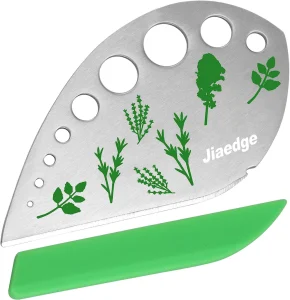The must-have kitchen tool that makes it easier to prepare herbs
There is no difference between fresh herbs and dried herbs. In raw foods like salads, sauces, pesto, and garnishes, fresh herbs can’t be replaced. Most of the time, they taste better and add more flavor than dried ones. But their planning is their biggest flaw. Fresh herbs need to be washed, stripped, and chopped before they can be used. Depending on the herb, this process can take a very long time. If you love fresh herbs, though, meet the herb stripper—an underrated tool that can help you get ready faster.
How do you use a Herb Stripper?
Herb strippers do exactly what their name says: they help take leaves off of stems. They have holes of different sizes so that you can use them with different flowers. To get rid of all the leaves, you just put the stem on one side of the smallest hole it can fit into and pull it through. Some can remove kale and other leafy veggies because their holes are big enough. Some types come with a blade so you can use the same tool to both strip and chop flowers. Some have bowls that are connected to catch the leaves as they pass through the holes.

For people who cook with fresh herbs, this tool could change everything. After seeing how fast the stripper works, they might even want to use plants more often. It might even make home cooks want to try new greens for the first time. Here are some things to remember.
First, as soon as you get a bunch of fresh herbs, wash and dry them to get rid of any bugs or dirt. Then, put the herbs in bags that can be sealed and wrap them in paper towels. The paper towels will help the herbs stay fresh, but you should use them within a few days to get the most taste out of them. There are a lot of ways to enjoy their unique tastes, which is good.
Herb strippers can be bought at Walmart, Target, Amazon, or one of the cooking supply stores near you.
Different kinds of fresh herbs and how to use them
Basil: This is one of the most famous herbs, maybe because it tastes sweet and a little spicy. It’s often used in Mediterranean cooking, but it can also go well with other types of food. It’s also the most common vegetable used in pesto. If you want to get the most out of basil, add the leaves (not the stems) near the end of cooking. This is true whether you are making pasta sauce, fish, or chicken.

